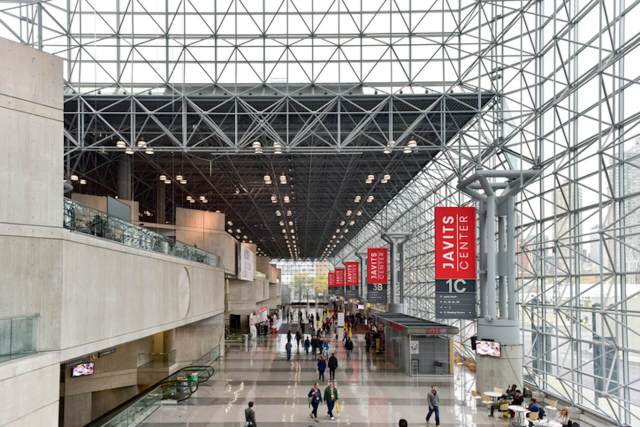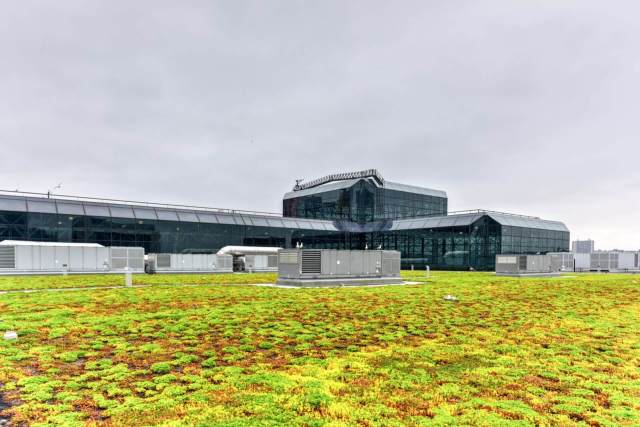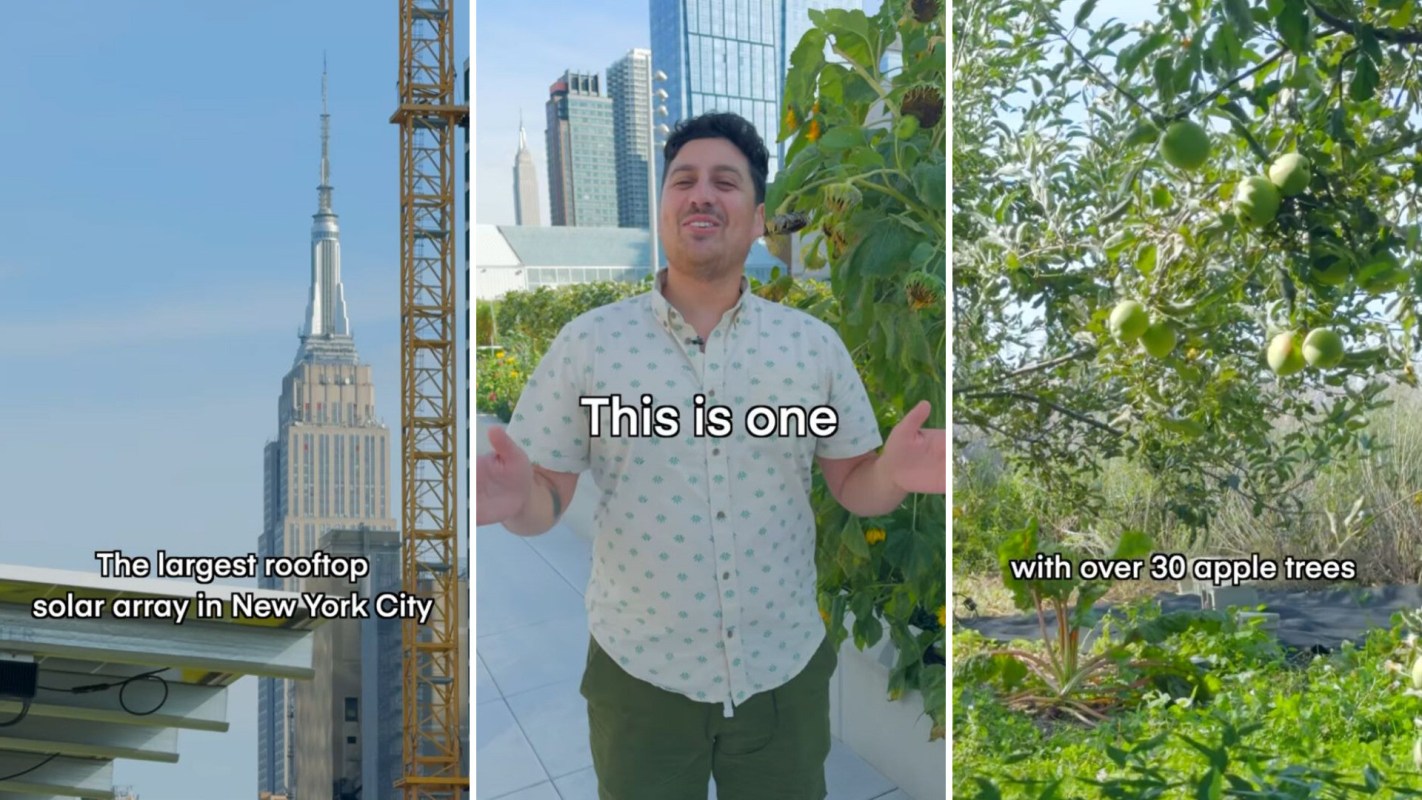New York's largest convention center now boasts the biggest solar panel installation in New York City, a bird-friendly wind turbine, and a 1-acre farm that grows 50 crops per season.
It's a massive makeover for New York's largest and oldest convention center, the Javits Center, which hosts millions of people a year coming through New York for events and conferences.
It's not only saving money and making a positive impact on the environment — it's also attracting new businesses and exposing millions of visitors to conservation and sustainability.
Plus, it's keeping birds alive.
When the Javits Center first opened, the building had black mirrored glass, which as the staff told The Cool Down, "birds don't understand." Javits became the no. 1 bird collision spot in New York City, killing more birds than any place else in the city.

They've since replaced all of their mirrored glass with "bird-friendly" glass, reducing bird collisions by 95%. And through a partnership with the NY Audubon Society, they're now home to 35 bird species, five bat species, and a nesting area for herring gulls.
It's all part of CEO Alan Steel's vision to "bring sustainability to people" and to make the Javits Center a model for the events industry, for buildings across NYC, and for the community.
"We're a bit of a missionary," he said at the The Nest Climate Event hosted at the Javits Center during Climate Week. "We now have an audience who is ready to learn."
The 6.75-acre green roof is one of the largest of its kind in the United States and includes a 1-acre rooftop farm growing up to 50 crops per season and a hydroponic greenhouse, a compost system, and an orchard turned into a food forest producing 400 pounds of apples last year.
The roof and farm are home to nine honeybee hives, harvesting 100 pounds of honey for catering and honey jars. (Watch their oddly satisfying live bee cam midway down the page here.)
The food harvested on the farm goes to the chefs preparing the meals, reducing packaging and transportation costs while providing fresher food for their menus.


Since the renovation was completed in 2014, the roof has reduced energy use by 26% by acting as an insulator and reflecting heat, keeping the building warmer or cooler by about 10 degrees. (Check out the live green roof cam here.) With a huge solar array and now a bird-friendly wind turbine, renewable energy generates at least 10% of the Center's power.
It's also able to absorb rainwater — 7.6 million gallons of rain a year, to be exact — which, given the recent flooding in NYC, could be one of its greatest assets.
Steel said the focus on sustainability has become a draw for businesses looking to model their values and create a unique event experience for their employees. They also offer tours and "Lunch and Learns" featuring food from the farm.
The latest addition showcasing their commitment? Steel unveiled a massive, 12,800-square-foot mural created by Mexican artist Carlos Alberto that inspires the restoration of ecosystems and biodiversity.
The mural, produced in partnership with the United Nations, features a woman embracing a tree surrounded by a jungle, "reminding us that communities need to be embraced by nature for human and environmental health in the 'concrete jungle' of our cities."
"The mural educates and informs, but it also brightens up the day," Steel said.

Join our free newsletter for weekly updates on the coolest innovations improving our lives and saving our planet.









